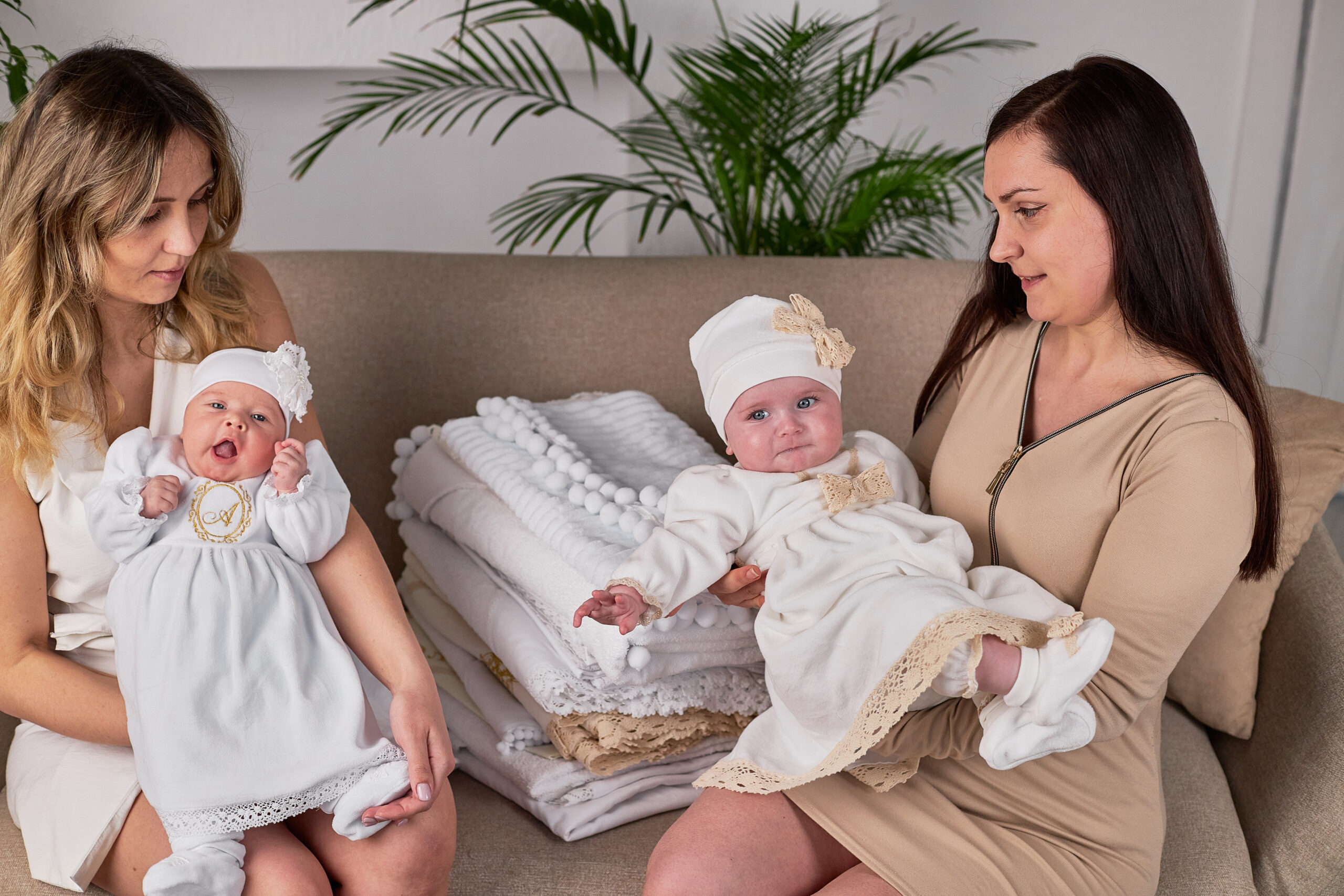

Baptism is an important event in the life of a child and the family. It symbolizes the beginning of a new spiritual life. Baptisms often become the first celebration for a newborn baby. If you are becoming godparents for the first time or planning a baptism for your first child, you may feel excited and anxious. In this article, we have gathered everything about the baptism ceremony to familiarize you with the main preparation steps and mitigate the tension of the unknown.
The ceremony may vary slightly in different Christian denominations, but the main stages and symbolism remain similar. Usually, the ceremony is conducted by a priest in a church. The ritual can be divided into three main stages:
After completing the main part, you can ask the priest to bless the gifts from the baptized parents, such as a cross pendant, pendant, or icon.
The duration of the ceremony depends on the denomination and specific features of the church. For example, if you hire a choir, the ceremony may take a bit longer. On average, it lasts between 30 and 60 minutes.
Godparents or baptized parents are guides for the child on their spiritual path. Therefore, it is best if they are close family members and practicing Christians. Keep in mind that according to church laws, non-baptized individuals cannot be godparents. This also applies to those in civil marriages or those who haven’t been married in the church. If you are baptizing your child for the first time, don’t worry – the priest will guide you through the necessary actions. However, it is essential for godparents to know a few short prayers as they are part of the baptism ceremony.
Different countries and regions have their own traditions, superstitions, and even folklore associated with baptisms. For example, in Catholic churches, the term “baptismal blanket” refers to a small, often embroidered white napkin, not the white towel used in Orthodox and Greek Catholic churches, which is a full-size linen sheet in which the baby can be wrapped. Some churches require the blanket to be white, without any inscriptions or embroidery, while others allow cream or off-white tones with embroidery or other decorations. In the past, mothers were only allowed to enter the church 40 days after giving birth, but this tradition no longer applies in the majority of modern churches. There is also a common superstition that a pregnant woman cannot be a godmother, but this is not true. So, if your favorite friend or sister is expecting a baby, feel free to invite her to be the godmother of your child.
Remember that traditions and folk beliefs are merely local cultural elements. The main significance of baptism lies in its spiritual dimension and the birth of a new member into the larger Christian family.
We wish you and your baby a pleasant baptism and a happy future!